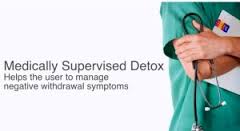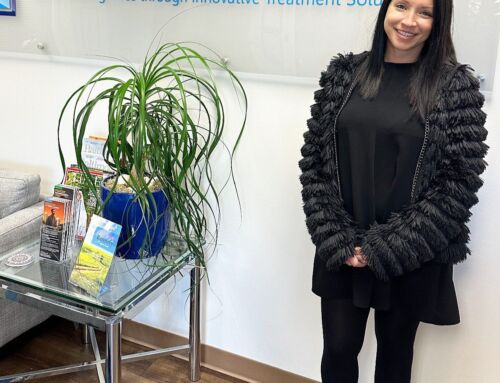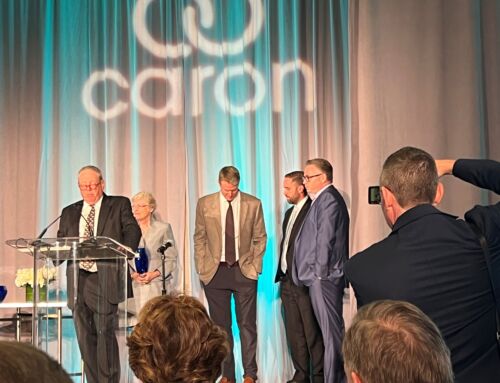Opiate addiction is a difficult addiction to deal with often due to the extreme physical withdrawal symptoms associated with this type of drug addiction. Opiates (or painkillers) can be natural or synthetic. Drugs like heroin, Fentanyl, hydrocodone, morphine, OxyContin and opium are types of opiates. When a person becomes physically addicted to an opiate they must consistently use that opiate every few hours or else they will begin to experience symptoms of withdrawal. These symptoms begin slowly in the form of agitation, anxiety, running nose, sweating and yawning but eventually they become much more intense. The later stages of opiate withdrawal include extreme hot and cold sweats, nausea and vomiting, intense muscle cramping, diarrhea and acute insomnia. Opiate withdrawal is like the most intense flu multiplied by one hundred. Opiate withdrawal is painful and can last several long, agonizing days. It is often the fear of this painful withdrawal process that keeps an addict using opiates for many years past the point where they wish to stop.
Opiate withdrawal is not deadly on it’s own (although it can be if other drugs are being used by the addict or mixed together while getting high or the addict attempts to withdrawal themselves using medications and drugs on their own). However, opiate withdrawal makes the addict feel like they want to die. Therefore, in order to safely withdrawal a person from an opiate addiction, a medically supervised detox is typically indicated. A medically supervised detox involves using a medication to take a patient from an opioid-dependent state to an opioid-free state under the care and direction of a medical professional with experience in conducting this type of medical detoxification process. Typical medications used during a medically supervised detox protocol would be buprenorphine or Suboxone. These drugs treat the withdrawal symptoms of opiate addiction. Additional medications such as Clonidine may be used to help stabilize blood pressure, and over the counter drugs are often utilized to deal with the headaches, diarrhea and nausea.
There are two ways a person can receive a medically supervised opiate detox. One is inpatient detox and the other is outpatient detox (or ambulatory detox). At an inpatient opiate detox, the client would check themselves into a facility (typically between 4-14 days in length) where they would be monitored by staff 24 hours a day. This is an extremely effective means of detoxification from opiates like heroin or OxyContin. Sometimes, if a client has checked into a 28 day program (or a longer term inpatient treatment progrdam), they will start off in detox and then move into another room where they will live during their treatment stay. At some but not all of these facilities, the client may receive treatment and therapy during their time in detox. The issues with inpatient detox is the it can be extremely expensive. Many insurances will cover an inpatient detox stay, but only after a person has attempted numerous outpatient detoxes. Also, when insurance does cover an inpatient opiate detox, it often only covers a few days and not the entire necessary length of time and having to pay out of pocket for an inpatient opiate detox can run in the thousands of dollars and that often only encompasses the detox- the client won’t even receive treatment for their addiction. In these cases, detox just becomes a “drying out” time. To overcome addiction, much more work needs to take place. A heroin addict or someone addicted to OxyContin that just goes to an inpatient opiate detox and receives no treatment and no follow up aftercare plan is in high danger of a quick relapse.
An a medically supervised outpatient opiate detox is also a detox supervised by a medical professional where medication is used over a determined period of time to move the client from a physical addiction to opiates through a taper of medication to an opiate-free life. This is done on an outpatient basis, where the client comes to see the doctor, is assessed and then a plan is determined to use medication to slowly get the client off their physical dependency to narcotics. The downside to an outpatient opiate detox is the client is not monitored 24/7 by staff. This constant monitoring does not make the detox any less safe, as it has been determined that an opiate detox easily can be medically done on an outpatient or ambulatory level of care. However, their is a lack of constant support. And there is no truth to the rumors that an outpatient detox can be done without pain for the client, just as an inpatient detox cannot be done without pain for the client. The truth is that a person physically dependent to heroin or painkillers is going to have some withdrawal pain, even with a medically supervised detox. They are going to be uncomfortable and feel awkward. Medicine and the addiction treatment industry has worked to make this process as painless and comfortable as possible, but that doesn’t mean it’s easy or quick or painless. Nor should it be. Addicts are always looking for a quick fix and as it relates to opiate detox, there isn’t one. An outpatient opiate detox does have some benefits for the client. They have the ability to still go to work or to school and not have to miss time away. They get to stay in their own home. It allows them to immediately go to 12 Step meetings and get connected into those fellowships of many people who have experienced what they are going through, can identify with the client and offer help and support. It is also much cheaper than an inpatient medical detox and insurance companies are often more likely to pay for an outpatient opiate detox outright than an inpatient detox. That being said, there is no 100% certified way that a client will stay clean and sober after either type of detox. There is no 100% right or wrong way. Many people have stayed happy and clean and sober after experiencing an inpatient opiate detox just as many people have done the same after an outpatient opiate detox. And clearly many people have relapsed after both methods.
At Maryland Addiction Recovery Center, we offer a medically supervised opiate detox on an outpatient level of care. Because an opiate detox does not offer a solution to an opiate addiction, we require any client that receives an opiate detox at our center to also engage in treatment. We believe in a holistic approach to treating addiction, therefore removing the physical addiction is only the first part in helping a client overcome drug addiction and get well in order to live a happy, emotionally sound drug free life.
If you or someone you know is in need of a medically supervised opiate detox in the Baltimore, Maryland area or any of the surrounding counties of Baltimore County, Carroll County, Harford County or Howard County, please call us at (410) 773-0500 or email info@marylandaddictionrecovery.com. To learn about all of our addiction treatment services, including our medically supervised opiate detox, please visit the web site at www.marylandaddictionrecovery.com.
Table of Contents






